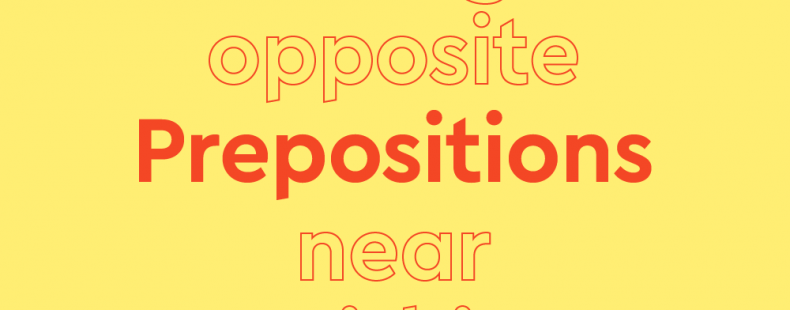A preposition is any word that introduces a prepositional phrase in a sentence. These everyday words and phrases provide the reader with more detailed information by demonstrating the specific location, time, place, relationship, or direction of a given object.
Prepositions help connect words and phrases to the next portion of a sentence. And though that sounds relatively straightforward, prepositions can actually be one of the trickiest aspects of grammar to understand. Not only do these words have abstract definitions when they stand alone, but prepositions can also be categorized differently based on the context of a sentence.
We have grammar guides to help you understand prepositions, including What Is A Preposition? Types And Examples. Here we’ll focus on lists of prepositions and quick tips on using them. We’ll also look at a few helpful examples of how prepositional phrases can be used in everyday language.
Prepositions of location and place
One of the broadest categories on this list is prepositions of location and place. Used to describe spatial relationships, these prepositions give more information about where something is located. (More often than not, that “something” is the object of the sentence.) Prepositions of location and place tend to answer the simple question: “Where?”
Example sentences:
- I left my car at the restaurant.
- The soccer ball landed on the roof.
- She stood behind her friend.
List of prepositions of location and place:
- aboard
- above
- across
- against
- along
- amid
- among
- around
- at
- away
- behind
- below
- beneath
- beside
- between
- beyond
- by
- close by
- down
- from
- in
- inside
- into
- near
- on
- onto
- opposite
- out of
- outside
- over
- to
- under
- underneath
- upon
Prepositions of direction
Prepositions of direction are exactly what they sound like: words that refer to the direction in which something moves or travels. Similar to their location and place counterparts, prepositions of direction can also describe the “where” of a sentence—which makes them awfully easy to mix up. (Remember: the same word can be classified as a different type of preposition based on the context of the sentence.) So, what’s the main difference between the two? Prepositions of direction often indicate some type of movement rather than a stagnant or stationary location.
Example sentences:
- We sauntered along the shore.
- She ran three laps around the building.
- The puppy stumbled down the stairs.
List of prepositions of direction:
- above
- across
- along
- among
- around
- against
- at
- away from
- behind
- below
- beside
- between
- by
- close to
- down
- from
- in
- inside (of)
- near
- next to
- off
- off of
- on
- onto
- out of
- outside (of)
- over
- past
- through
- to
- toward(s)
- under
- underneath
- up
Prepositions of time
Switching gears a bit, prepositions of time are used to describe when something happened, when something is currently happening, or when something will happen in the future. These prepositions can be easier to classify; they often answer the question: “When?”
Example sentences:
- My meeting is scheduled for 9 am.
- Please don’t talk during the movie.
- The coffee shop is closed on Mondays.
List of prepositions of time:
- after
- ago
- at
- before
- by
- during
- for
- from
- in
- next
- on
- since
- till
- to
- until
- within
Prepositional phrases
So we’ve established that employing prepositions is a great way to liven up your otherwise dull sentences. But to really make the magic happen (and ensure your sentences actually make sense), you’ll need to use prepositions to create prepositional phrases. These are modifying phrases that consist of a preposition and the object of a preposition, which is typically a noun, pronoun, proper noun, or a word or phrase that’s acting as a noun.
The proper structure of a prepositional phrase is a preposition followed by its object. That’s because the preposition acts as a connector between the object and the rest of the sentence—or more specifically, whatever part of speech the prepositional phrase is modifying.
In all of the example sentences above, you can see that we’ve used prepositional phrases (rather than prepositions alone) to add detail and nuance. Here are a few more examples of prepositional phrases in action:
- They need to be ready at a moment’s notice.
- We are related by marriage.
- The sewing class takes place in person.
- I walked through the enchanted forest, past the herd of wild horses, and around an enchanted castle.
See how the prepositional phrases in each of the above sentences provide additional context and details? Without the prepositional phrase, the sentences would be incomplete. For example: we are related by is not a full statement. How are you related? By marriage.
Don’t fall behind on knowing prepositions. Take the quiz!
Feeling confident in your ability to identify a prepositional phrase in a sentence? Think you’d be able to tell the difference between a preposition and an adjective or a conjunction? Then you’re invited to test your knowledge in our preposition quiz. Whether you complete the quiz on your smartphone or while sitting at your computer, you’re sure to be a prepositional expert by the time you finish. (See what we did there?)














